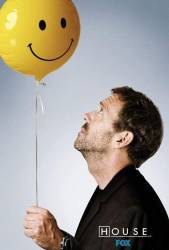Factual error: The whole episode is caused by medications being mistaken for one another. But the reason why is actually impossible. The patient states that the pills he took (in error due to a switch) had no letter or marking on them. With few exceptions - none of which apply to the medication the patient took - the US FDA law states that all solid medications must have a letter and/or number on each pill which allows them to be identified. No pharmacist would ever give out blank pills.
Factual error: House diagnoses contagious ecthyma in a patient exposed to a donkey. This zoonosis is however NOT transmitted by donkeys. "Contagious ecthyma virus causes papillomatous lesions on lips and mouth, and sometimes on the interdigital areas of primarily young sheep and goats. The hosts of contagious ecthyma virus are sheep, goats, alpacas, chamois, Rocky Mountain Bighorn sheep, Doll sheep, steenbok, wild thar, dog, camel, reindeer, musk ox, and man." https://doi.org/10.1016/B978-0-12-524180-9.50039-X. (00:27:07 - 00:27:40)
Factual error: In an episode with a severely overweight patient who is thought to have diabetes, it is discovered he instead has Chagas disease. Cameron then informs the patient that he acquired this illness from his food when, in fact, Chagas disease is a protozoan that is spread through the bite of the triatomine bug.
Suggested correction: While the main vector for the infection is through the triatomine bug, Trypanosoma cruzi (the parasitic organism that causes the disease) can be transmitted through food, and thus Chagas was caused by the food the patient ate. It should also be noted that Trypanosoma cruzi is not transmitted by the bite of the triatomine bug, but rather through its feces, and it's only spreads once the feces enters the blood stream (which it can do through a bite site or scratching an open wound).
Factual error: When Dr. Cameron's agoraphobic patient goes into cardiac arrest at home following the surgery, she tells House to get the paddles ready. House, while performing CPR is talking on the phone with the patient's lawyer, informing him that patient has PEA (pulseless electrical activity) on the cardiac monitor, but Dr. Cameron defibrillates the patient anyway, restoring the heartbeat. Defibrillation is not indicated for PEA, it will not restore the pulse and might send the patient into vFib.
You Don't Want to Know - S4-E8
Factual error: Amber triggers a fire alarm by heating the sprinkler with her lighter. Unfortunately that fire sprinkler doesn't detect heat (or smoke). The sensor is located between the ceiling lamps, about two meters from the fire sprinkler. (00:09:00)
Suggested correction: Heat applied to the sprinkler would cause it to activate and spray water. All modern fire systems will detect this water pressure drop and activate the alarm.
Factual error: Every time there is a patient given a non-rebreather O2 mask, the bag is uninflated. The correct way of administering O2 through a NRB is to inflate the bag first, which would be the reservoir for the O2; a common mistake in many Hollywood medical shows.
Factual error: House makes a person have a seizure by switching the light on and off. This would not cause a person to have seizure as it takes more flickering than that to trigger a seizure in people with photosensitive epilepsy.
Factual error: The boy plays a game of chess at a tournament against some other person. The camera only shows a few pictures of the board, however, when the boy says "goodbye" and the game ends, due to an allegedly checkmate, the following is shown: the opponents king is on f7, with his own figures all around but e8 and h7-9 being free. On h5 is the boy's rook which attacks the h7, h8 and h9 fields. Now the boy moves his bishop to h6, thus attacks f7 (where the king is) and e8 (the only free spot but h6-8). Now of course h6, f7 and e8 are not available to the king anymore, but as the bishop blocks the rooks attack on the h-line, the king now has the fields h7 and h8 to go to. Thus it's by no means "checkmate." (00:01:00)
Factual error: When Dr. House is in the treatment room with a patient that has a gunshot wound to his foot, he removes a bloody dressing and treats the area without wearing gloves. No health professional would do this.





